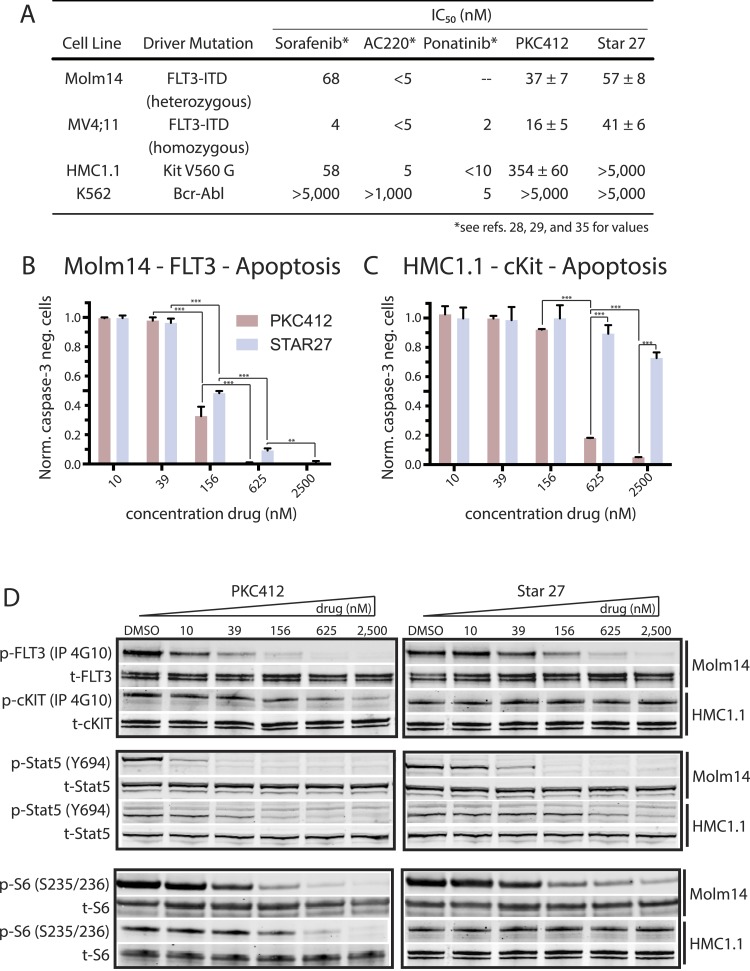Figure 2. Cellular proliferation, apoptosis, and biochemical validation of Star 27’s potency against FLT3 mutants, but not in the KIT context.
(A) Table of cellular IC50 values for leading experimental clinical therapies (Sorafenib, AC220, Ponatinib, and PKC412) and Star 27 against a panel of AML-relevant human-derived (MV4;11 and molm14) cell lines and toxicity controls (HMC1.1 and K562) (adapted* from Guo et al., 2007; Kampa-Shittenhelm et al., 2013; Smith et al., 2013). Star 27 shows a similar order of magnitude potency against Molm14 and MV4;11 compared to PKC412. Relevant therapeutic windows between PKC412 and Star 27: an over fivefold increase in selectivity for HMC1.1/MV4;11 cells and an 11-fold increase for HMC1.1/Molm14 is observed for Star 27 over PKC412. Replicates shown are the result of at least three attempts, each in triplicate, and error ranges represent the standard error of the mean. (B) Normalized caspase-3 negative cells plotted against escalating drug dosage. Star 27 shows a similar degree of apoptosis to PKC412 in Molm14 cells. (C) In KIT-addicted HMC1.1 cells PKC412 exhibits potent toxicity while Star 27 shows very little up to 2,500 nM. Results performed in triplicate with two biological replicates. **p < 0.01; ***p < 0.001. (D) PKC412 and Star 27 have a similar degree of inhibition against p-FLT3 in Molm14 cells as well as a similar degree for p-STAT5 and p-S6 (for p-ERK, p-AKT, and p-MEK data not shown). In the HMC1.1 cells, by contrast, PKC412 and Star 27 show a larger difference in p-KIT inhibition.

